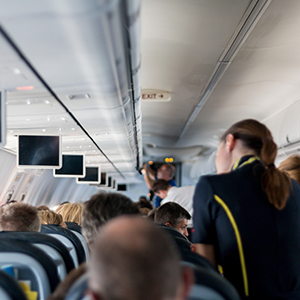COPD patients’ pre-flight check: A narrative review

All claims expressed in this article are solely those of the authors and do not necessarily represent those of their affiliated organizations, or those of the publisher, the editors and the reviewers. Any product that may be evaluated in this article or claim that may be made by its manufacturer is not guaranteed or endorsed by the publisher.
Authors
For most of the people with stable and well-controlled chronic obstructive pulmonary disease (COPD), air travel is safe and comfortable, but the flight environment may pose clinical challenges. This narrative review aims to update the requirements for allowance to fly of people with COPD without chronic respiratory failure. A literature review was performed on platforms: Pubmed, Scopus and Ovid, for citations in English from 2000 to 2021. The following key words were used: COPD AND: air-travel, in-flight hypoxemia, fitness to air travel. Official regulatory documents and guidelines were also examined. Current air travel statements recommend supplemental oxygen when in flight arterial oxygen tension (PaO2) is expected to fall below 6.6 or 7.3 kPa. Several lung function variables, prediction equations and algorithms have been proposed to estimate in-flight PaO2, the need for in-flight supplemental oxygen, and to select individuals needing more advanced pre-flight testing, such as the hypoxia-altitude simulation test. Exercise induced desaturation and aerobic capacity correlate significantly with in-flight PaO2. COPD patients with late intensification of disease, new changes in medications, recent acute exacerbation/ hospitalization or anticipated emotional and physical stress during the proposed air-travel should be carefully evaluated by the caring family or specialist physician.
How to Cite

This work is licensed under a Creative Commons Attribution-NonCommercial 4.0 International License.






